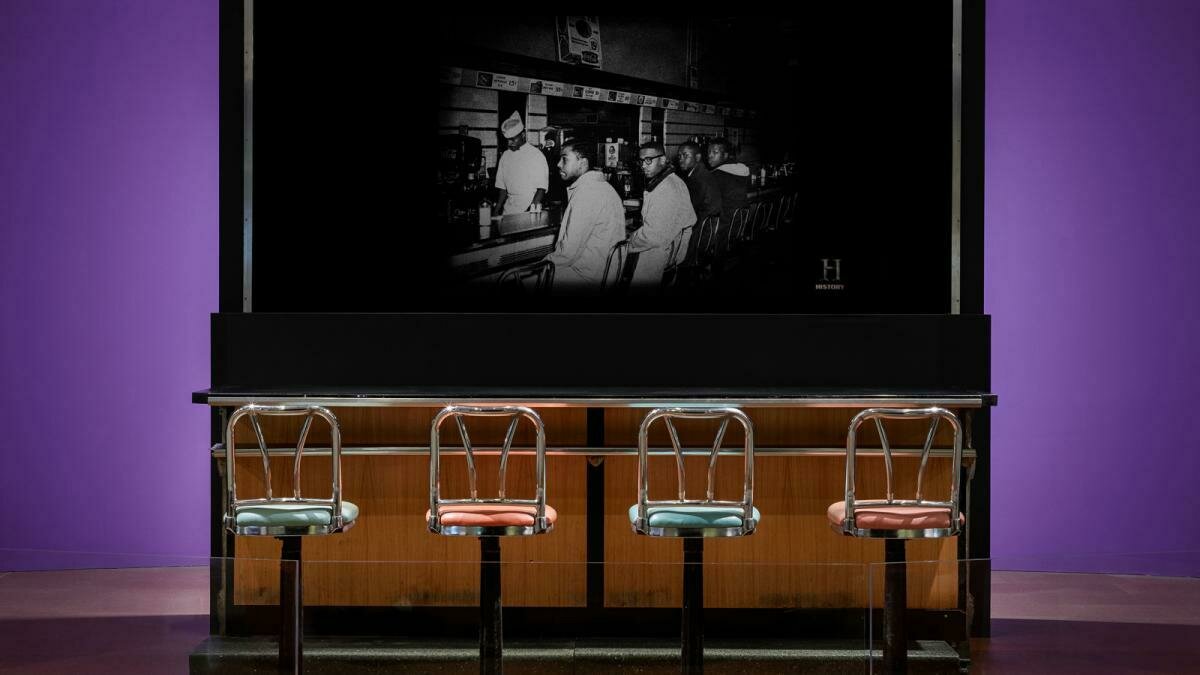
Lesson Hub 2
Precursors to the Civil Rights Movement
Power to the People! Sounds of the Civil Rights Movement

What underlying issues sparked the civil rights movement?
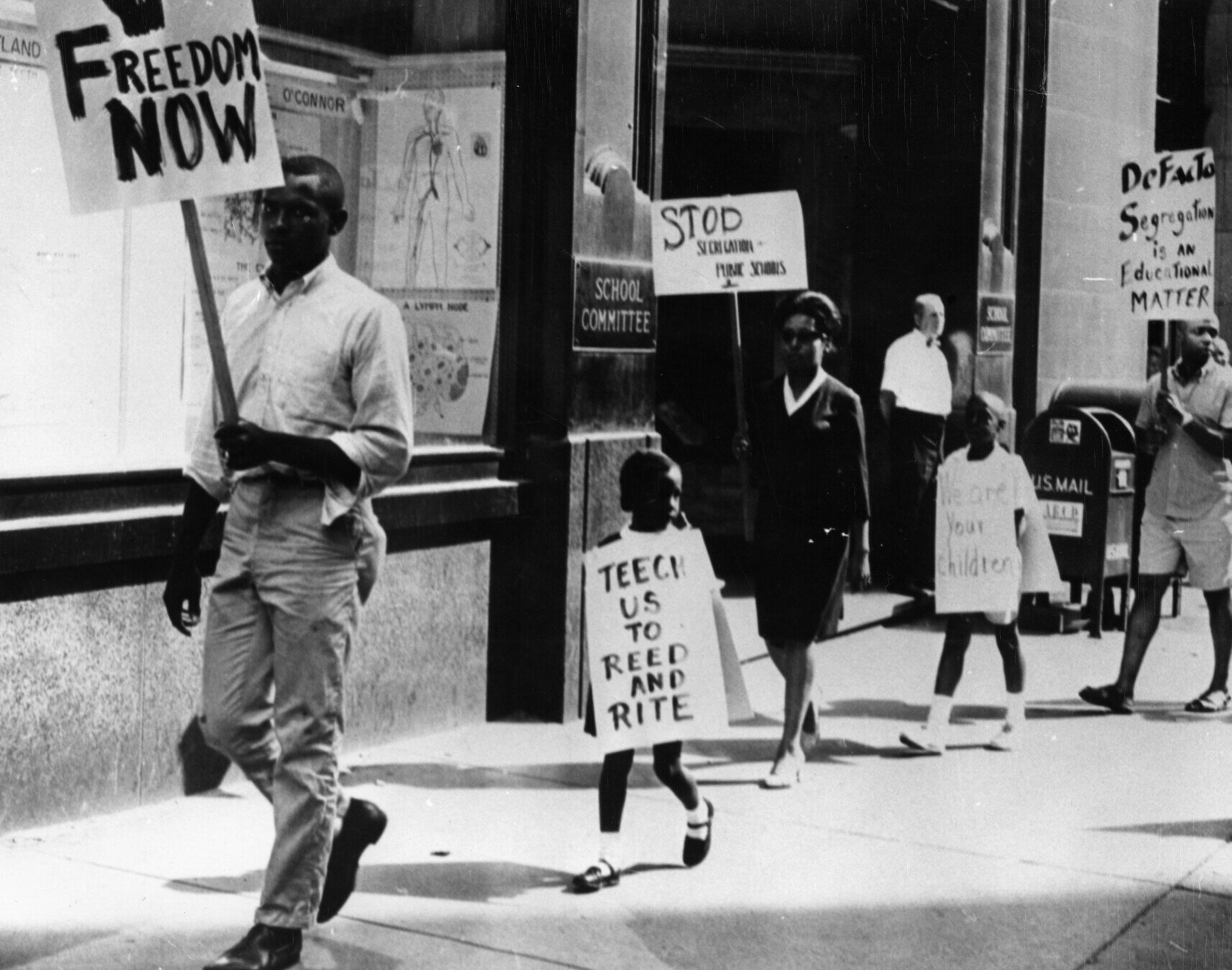
Boston Public Schools Demonstration, unknown photographer. Northeastern University Archives and Special Collections.

Precursors to the Civil Rights Movement

Understanding Segregation

30–45 minutes

Path 1
To better understand how segregation affected people in the 1950s, consider how it might impact you today.


Understanding Segregation

Segregated Bus Sign, Unknown Maker. National Museum of African American History and Culture.
Hard as it is to believe, the United States was segregated by race just 60 years ago . . .


Understanding Segregation


A Woman Holding a Blank Placard, Unknown Photographer. RDNE Stock Project.
Today is the first day of the new school year!
Outside the building, you notice some students holding up signs.
You wonder: "What're height laws?"
Understanding Segregation


Then you see the sign...
Anyone 5'7" or taller will be expelled if caught using facilities intended for use by those 5'6" or shorter including, but not limited to:
- luxurious restrooms
- state of the art classrooms/new textbooks
- professional gym equipment
- fresh spring water fountains

Tall and Short People Clipart, Unknown Artist. Public Domain via Cliparts.




What do I think about these rules?
Understanding Segregation
What if I have friends in the other height group?
Will I miss spending time with my shorter/taller friends?

Panicked Man, by unknown artist, CC By-SA 4.0, via Wikimedia Commons.


Understanding Segregation

"Anyone over 5'7" caught using the new facilities will be expelled."
No exceptions!
After a month with the new rules in place, the school receives a grant to improve...
... all facilities used by people 5'6" and shorter. In addition, the new rules state:


From now on, students over 5'7" must contend with:
- broken desks
- outdated books
- moldy cafeteria food
And no one cares, so don't complain.
Understanding Segregation
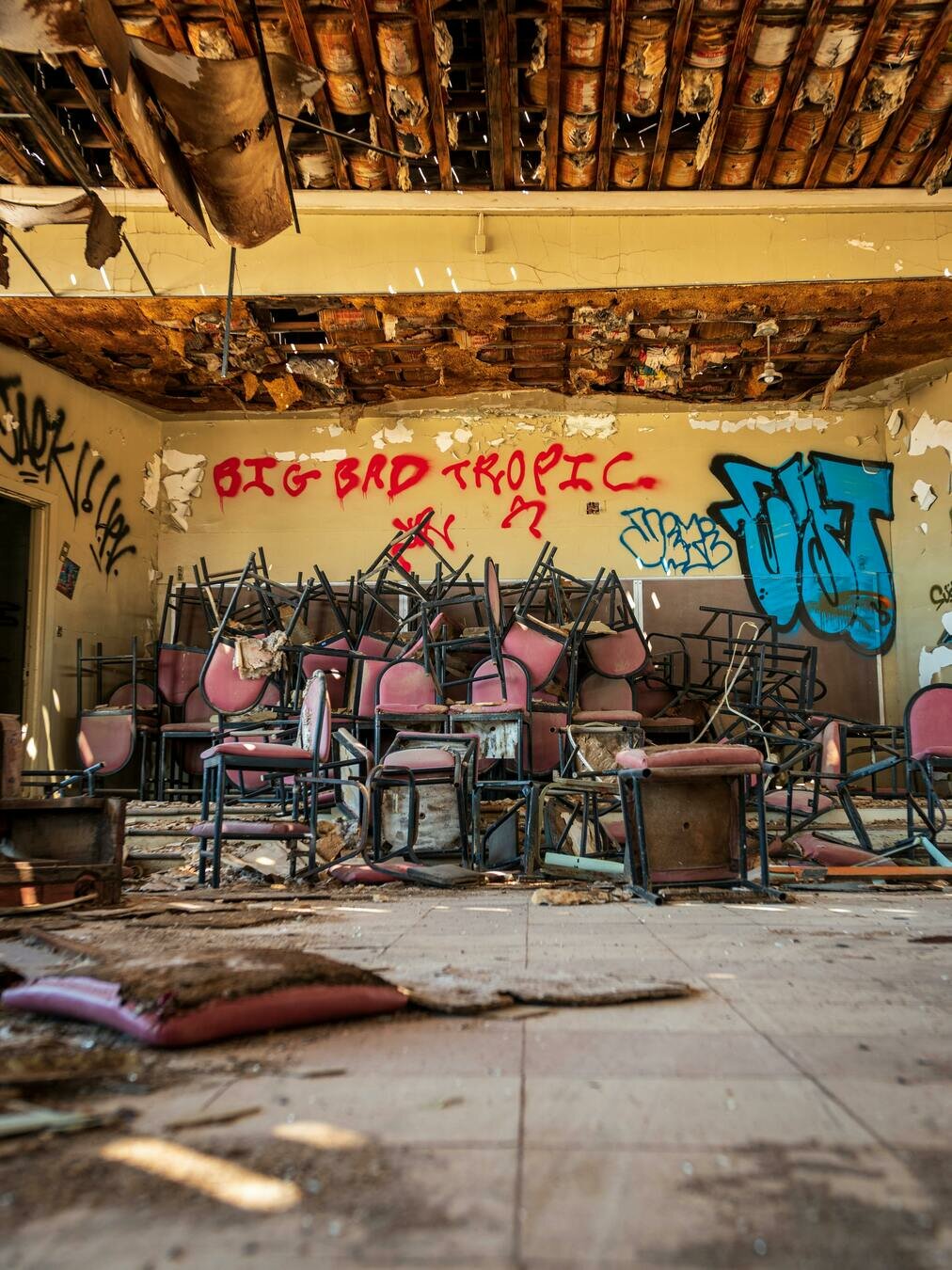
Stacked Abandon Chairs, by Unknown Artist. Public Domain via Pexels.


Reflections on Justice and Equality
Is this treatment just?
Is it equal?


Reflections on Justice and Equality
What is justice?
Justice is the alignment of acts, structures, and ideals with the rules of law to ensure impartiality and fairness.
Example: A student is caught by a teacher cheating on an exam and so receives an F as a consequence.


Reflections on Justice and Equality
What is equality?
Equality means that status, rights, and opportunities are the same for everyone.
Example: Everyone has equal access to the same resources.


Reflections on Justice and Equality
How might the two groups achieve equality? Discuss these ideas.
Be satisfied. Recognize that all students are being educated.
The shorter students should join forces with the taller students to demand equal treatment for all.
The taller students should demand equal treatment on their own.
Or? Propose alternatives!

Throughout American history, Black individuals have experienced segregation and discrimination based on their race. This was especially evident during the era of Jim Crow.

Segregation and Discrimination in the U.S.
-
What is segregation?
-
What is discrimination?
-
Who was Jim Crow?



Segregation and Discrimination in the U.S.

Laws forced Black people to remain segregated, or separated, from white people. They attended separate schools and used separate drinking fountains and entrances into theaters, shops, and restaurants. Black facilities were often shabby.
Lewis Mountain Negro Area, National Park Service.
Segregation


Segregation and Discrimination in the U.S.
Before the civil rights movement, Black people in America, especially in the South, were victims of discrimination;
they were denied the civil rights that were granted to white people by default.
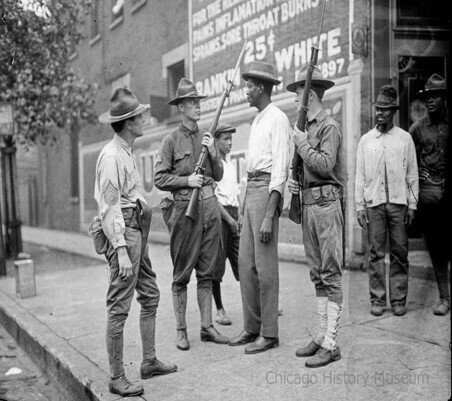
National Guard during the 1919 Chicago Race Riots, Jun Fujita. Chicago History Museum.
Discrimination


Segregation and Discrimination in the U.S.
Shortly after the Civil War (1865), much of the South enacted Jim Crow laws to deny access to public facilities, housing, education, equal pay, and other civil rights to newly freed African Americans.

Negro going in colored entrance of movie house on Saturday afternoon, Belzoni, Mississippi Delta, Mississippi, photo by Marion Post Wolcott. Library of Congress
Jim Crow Laws


Understanding Segregation - Discussion
Recall the Height Laws...
Discuss similarities and differences in the segregation faced by taller students under the new school rules and Black people overall.


Students who are 5'7" or taller must remain separate from and use different facilities than those who stand under 5'6". This includes:
restrooms, water fountains, gym and locker rooms, classrooms, textbooks, cafeteria, school entrances and exits


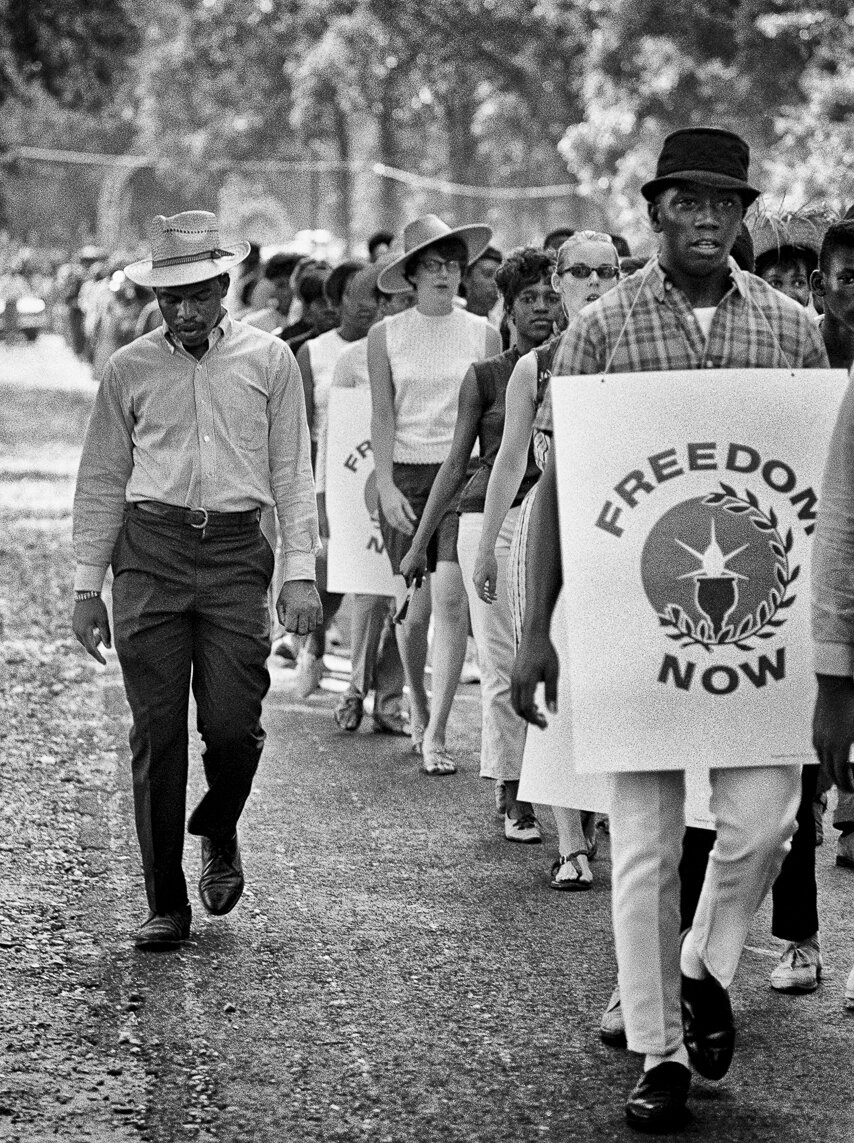
Speaking Out Through Music

What media in the United States have been used historically to protest the segregation and discrimination faced by Black people?
A. Demonstrations/public protests
B. Boycotts
C. Songs
D. Artwork
E. Theatre
F. All of the above
A Bone-Weary John Lewis Arrives at Tugaloo College on the Outskirts of Jackson, Maria Varela.

Civil Rights and Media

A. Demonstrations, e.g., March to Selma
B. Boycotts, e.g., Montgomery bus boycott
C. Songs, e.g., Freedom Singers
D. Artwork, e.g., photos of Gordon Parks
E. Theatre, e.g., Golden Boys musical
F. All of the above
All of the above! Throughout U.S. history, African Americans have brought attention to discrimination and segregation through...


Speaking Out Through Music

In 1960, Bill McAdoo and Pete Seeger collaborated on a song about discriminatory Jim Crow laws. Entitled "I Don't Want No Jim Crow Coffee," the song refers to several acts of discrimination.
-
Sit-ins at J.W. Woolworth lunch counter
-
Lynching of Mack Parker
-
Unionizing West Virginia miners

I Don't Want No Jim Crow Coffee, lyrics by Bill McAdoo, music traditional. Folkways Records.

Civil Rights and Media


Mack Parker
West Virginia Miners
Woolworth's Sit-Ins
Parker was lynched without a trial in Mississippi after having been wrongfully accused of raping a white woman.
Miners in West Virginia who lived and worked under unsafe conditions fought to unionize to improve working conditions.
Young adults faced bullying and threats while waiting respectfully for service at the lunch counter.
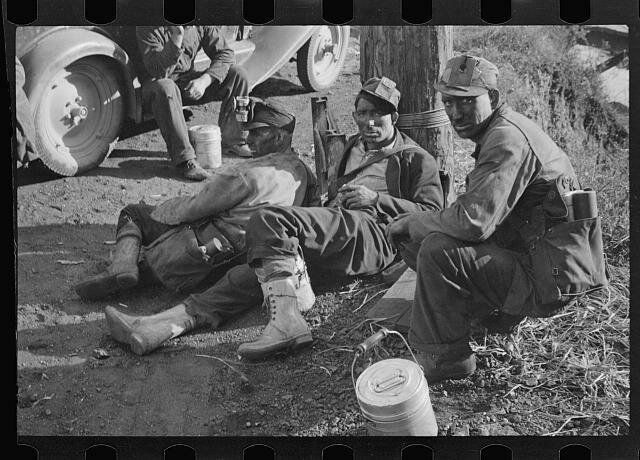
Group of coal miners, Williamson, West Virginia, photo by Ben Shahn. Library of Congress.
Greensboro Lunch Counter. Woolworth's. National Museum of American History.

Speaking Out through Music

"I Don't Want No Jim Crow Coffee"


Bill McAdoo Sings, with Guitar, cover art by David S. Martin. Folkways Records.

Speaking Out Through Music


I Don't Want No Jim Crow Coffee, lyrics by Bill McAdoo. Folkways Records.
"I Don't Want No Jim Crow Coffee"
The song refers to many events. Why title it "I Don't Want No Jim Crow Coffee"?
Listen again while following the lyrics.
Notice Bill McAdoo's performance style.

Learning Checkpoint
-
What were Jim Crow laws?
-
What is discrimination, and how was it experienced before the civil rights movement?
-
What is segregation, and how was it experienced before the civil rights movement?


End of Path 1: Where will you go next?



Minstrelsy:
The Troubling Roots of American Musical Theater
Path 2



45 minutes

Minstrelsy


Primrose & West's Big Minstrels (Howe, Wall, and McLeod), Strobridge Lithography Company. National Portrait Gallery
After nearly 300 years of enslavement, all Black men and women in the United States were granted citizenship in 1868 by the 13th Amendment.
Racism, however, endured.
Many white citizens did not believe that Black Americans deserved all rights, despite the new laws.
The difficulty experienced by African Americans in gaining equal rights and consideration as human beings is reflected in the popular music of the era.
What Is Racism?



-
Racism is a belief that people possess distinct abilities, characteristics, and qualities unique to their race.
-
This idea is an example of a social construct, or an idea that is developed by society rather than science. The science proves that there are more similarities than differences among people.

Minstrelsy


Minstrelsy became popular in the early 19th century. It was a form of musical theatre that parodied the Black experience.
Wm. H. West's Big Minstrel Jubilee, Strobridge Lithography Company. Library of Congress.

Minstrelsy during Reconstruction

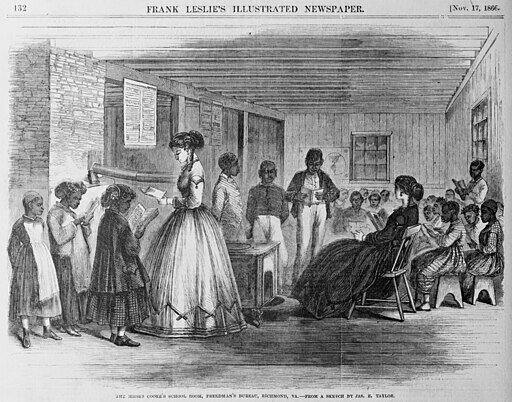
The Misses Cooke's school room, Freedman's Bureau, Richmond, VA., James E. Taylor. Library of Congress.
With the withdrawal of Union soldiers in 1877, a new period of racism known as the Jim Crow Era took hold, particularly in the South.
This was the Reconstruction Era (1865-1877), a period that lasted little more than a decade.
After the Civil War, the United States passed new laws in an attempt to ensure protection and equality for newly freed African Americans.

Minstrelsy
Minstrelsy began as a blackface tradition and set the foundation for vaudeville and other forms of musical theatre.

The performance style is mostly recognized for white performers who put on blackface (charcoal) and parodied the Black experience through exaggeration.

Minstrelsy



Who is Jim Crow?

Jim Crow is one of many characters developed in blackface minstrel tradition that exaggerated and mocked the Black experience.
But there are other racist characters who have represented Black stereotypes including:
Mammie
Picaninny
Tambo
Zip Coon
Who Is Jim Crow?
Mammie

Mammie (mammy) is a historical maternal slave. She worked in the master's home, cared for the master's children, and was often characterized as heavyset and matronly.

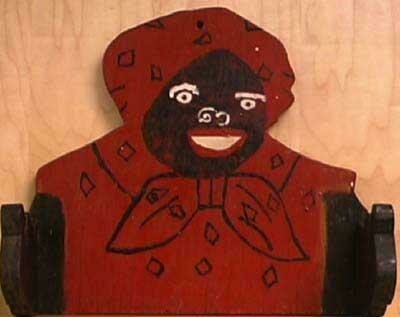
Mammy , Unknown artist. Jim Crow Museum


Picaninny
The term "picaninny" broadly described any Black child.
It was also used to refer to someone who lacked common sense.
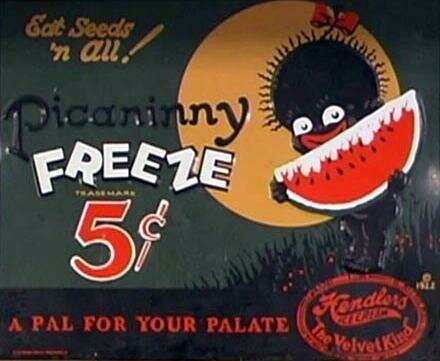
Picaninny Freeze, Unknown Artist. Jim Crow Museum


Tambo
Mr. Tambo was a minstrel character who played the tambourine. He often accompanied another character who played the bones or castanets.



Zip Coon
Zip Coon was the minstrel character described as an urban African American - free and separated from the life of slavery.

Zip Coon, unknown artist. Public Domain via Wikimedia Commons.
Who Is Jim Crow?

Thomas D. Rice is often labeled the "Father of Minstrelsy" since he created the most well-known and identifiable minstrel character:
Jim Crow


Jim Crow, by Edward W. Clay. University of Virginia.
Who is Jim Crow?


The character Jim Crow is a parody of a disabled slave.
Inarticulate, dimwitted, shabby -- he embodied many of the stereotypes about Black people that endured into the 20th century.
Jump Jim Crow - Blackface Song and Dance, from Ikachina. Youtube.
Rice gave Jim Crow that name after observing a slave dance to the song "Jump Jim Crow."

Form and Function
-
Hee Haw
-
Laugh-In
-
Amos and Andy
-
Muppet Show
-
Flip
-
Sonny and Cher Comedy Hour
Minstrel shows set the structural form for many U.S. variety shows in the United States in the 1980s:


Form and Function

Hee Haw Intro, from Hee Haw Memories. Youtube.
The Muppet Show Opening and Closing Theme 1976 - 1981 (With Snippets), from TeeVees Greatest. Youtube.

Form and Function
Introduction - (Interlocutor)
Typical structure of a minstrel show:

Olio - (Specialty Acts/Ensemble Numbers)
Finale - (Walkaround/Final number with full cast)


Form and Function
Introduction and Specialty Act
First, you'll briefly see the interlocutor introduce the host. The interlocutor acts as the emcee and the following skit is a specialty act.
These acts can vary between dialogue and musical performance, thoughf band music is interwoven throughout.

71 years ago.... Cotton Watts and Chick Watts, by Ron Ormond. Youtube.

Form and Function
Finale
Pictured here is a version of the finale. All members of the cast appear on stage to close the show in a huge, showy musical number that typically includes dance and singing to a memorable tune.

Black & White Minstrels - Mammy & Grand Finale (early 60s), from Classic Music of Yesteryear. Youtube.

Form and Function
What are your thoughts after viewing both videos?
When do you think these videos were created?

- A. 1870s
- B. 1900s
- C. 1960s
- D. 2000s

Form and Function
While African Americans and others were protesting Jim Crow laws and demonstrating for equality, many other Americans were still watching minstrel shows that reified racist imagery of African Americans.
Hard to believe but these clips were filmed in the 1960s.

Origins of Modern Folk Songs


Some of the most popular minstrel song writers were folk singers who we cherish to this day: James Bland, Samuel Lucas, and Stephen Foster.
How did camp songs evolve from racist to acceptable?
Many popular camp songs and folk songs that we've known since childhood originated as minstrel songs:
- Camptown Races
- Oh Susanna
- My Old Kentucky Home
- Carry Me Back to Ole Virginny

Origins of Modern Folk Songs




Listen to the song, what elements of the music do you believe make this tune catchy and popular nearly 200 years after it was published in 1850?
Dandy Jim from Caroline, Unknown Artist. Public Domain, via Wikimedia Commons
"Camptown Races," performed by Pete Seeger.
-
A. Tempo
-
B. Melodic structure
-
C. Lyrical Content
-
D. Harmonic structure
Origins of Modern Folk Songs




Using your listening log, listen to the song again and fill out the "People" section and try to discern the meaning and use of this song in minstrels, and how the song might of continued to be transmitted to today.

Text



Take the time to listen to this recording of "Camptown Races," written by Stephen Foster. (Performed by Pete Seeger)
Stephen Foster, unknown Photographer. Public Domain, via Wikimedia Commons
Origins of Modern Folk Songs


Discussion:
What elements of the song do you find most compelling and memorable?
Why do you think these songs, though racist in nature, are still popular today as camp songs and in music classes?
How might the lyrics suggest this song was intended originally for minstrel shows?

Learning Checkpoint
-
Should we reconsider the history of some of our favorite children's and camp songs?
-
If so, why?




End of Path 2: Where will you go next?
Before They Were Enslaved
Path 3:

30+ minutes


Before They Were Enslaved

Before proceeding, please be aware content can illicit strong emotions. Come in with an open mind and share what you have learned.


Transatlantic Slave Trade


Consider the traditional story about Black people in American history:
-
Tradition holds that the slave trade in America began in 1619 when an English ship landed at Jamestown, Virginia.
-
Actually the slave trade began nearly two hundred years prior when landowners traded enslaved Africans in regions of the Americas including South and Central America as well as what is now South Carolina.

African Americans in Jamestown, by Sidney King. Special Collections, John D. Rockefeller Jr. Library, The Colonial Williamsburg Foundation
Transatlantic Slave Trade

Products of Slave Labor

The transatlantic slave trade brought enslaved Africans to the Caribbean and Americas for labor.
Goods then sold to northern states and Europe where raw materials were manufactured into guns, cloth, iron, and alcohol.
Manufactured goods then sold to individuals and empires in Africa, creating an ongoing cycle of supply and demand.
Cotton
Sugar Cane
Rice
tobacco
Transatlantic Slave Trade


The ship that landed in 1619 arrived with only 20 of its original 350 abducted Africans.
Most abducted Africans perished at sea due to the conditions of the ship, pirates, and disease.
This ship was one of the many engaged in transporting and selling about 12 million enslaved Africans.
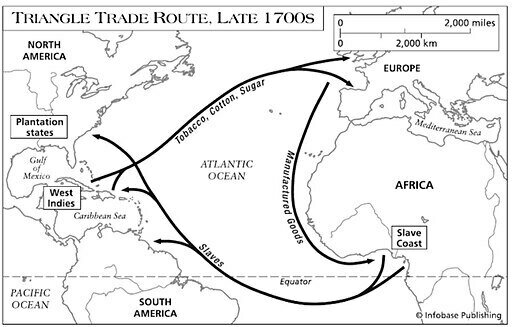
Triangle Trade Route, Late 1700s, by Dorothy Schneider and Carl J. Schneider. Checkmark Books
Transatlantic Slave Trade

Reflection

On the journey, the captors intentionally stripped the abducted Africans of their names, culture, language, and identity by prohibiting them from speaking their language, keeping them bound, and refusing to call individuals by name.
What did captors hope to gain by these tactics?

Discussion Activity
We often forget that the slave trade involved human beings with feelings, families, and stories.
Let's consider the history of those 12+ million enslaved Africans before their abduction.


Discussion Activity
In small groups of 2-3, consider one or more possible scenarios for someone who was abducted. Discuss how their abduction might have impacted others.

- Military leader in the Kongo Kingdom in South Central Africa
- Young scholar who recently completed studies in Timbuktu
- Hardworking farmer and dad
- Young teenage girl selling goods in the market

Discussion Activity
This video by Henry Louis Gates discusses the rich, unknown history of Africa.
(note on ppt that screenshot of HLG cannot be used. need replacement.



Discussion Activity
How does putting a narrative to an enslaved African affect how you view the trans-Atlantic slave trade?

Why were some Americans reluctant to allow enslaved Africans freedom and equality under the law?

Printed announcement of public sale of slaves by Therese Cerre Chouteau, executrix of A. Chouteau, deceased, August 24, 1830, Charless & Paschall, PRS. Missouri Historical Society

Sound Studies
We often omit the importance of sounds in the environment that inform our understanding of history.
Let's consider the sounds that individuals might have experienced when they were abducted in the trans-Atlantic slave trade.

The field of Sound Studies involves the study of history through analyzing the aural soundscape (silence, music, environmental sounds, voices, etc.)


Sound Studies...
... is the study of sound and listening as functions of history and culture. In its broadest sense, sound studies aim to understand precepts and practices of sound as part of an auditory ecology that consists of cultural, industrial, scientific, and technological relations between music, speech, noise, and silence.
The field of Sound Studies thus adopts a broader perspective than the usual musical disciplines and examines music as simply one aspect (although significant) of larger "listening formations" (Devine, Kyle).


Sound Studies: Middle Passage
There is little record of the experiences of enslaved Africans on the journey from Africa to the Americas -- referred to as the Middle Passage.
Though no one can truly fathom the experience, we can infer for a moment what that experience entailed by learning some of the context.
Slave Ship, Unknown Artist. Shuttershock, via Brittancia



Sound Studies: Middle Passage
Many ships held between 250-600 abducted Africans, often tightly "packed" and chained together. The trip lasted between 20-40 days.
Take about 60 seconds in silence to imagine what sounds you might hear on the ship. As a class, discuss how you experienced the following sounds:
Transatlantic Slave Ship, by Lieutenant Francis Maynell. National Maritime Museum, London


- Ocean/Wind
- Birds/Animals
- Other Enslaved Africans
- The Captors
- Silence


Learning Checkpoint
- How was the trans-Atlantic slave trade significant to the formation of the United States?
- How were its effects still relevant throughout the Civil Rights Movement?






End of Lesson 2: Where will you go next?



Lesson 1 Media Credits
Audio courtesy of:
Smithsonian Folkways Recordings
Video courtesy of:
Les Blank Films and Argot Productions
Images courtesy of:
Archives of American Art
The Arhoolie Foundation
Custom Creations
David Dilts
National Museum of African American History and Culture
National Museum of American History
National Portrait Gallery
Smithsonian American Art Museum
Smithsonian Folkways Recordings
TM/© 2021 the Cesar Chavez Foundation. www.chavezfoundation.org
© 2023 Smithsonian Institution. Personal, educational, and non-commercial uses allowed; commercial rights reserved. See Smithsonian terms of use for more information
This Lesson was funded in part by the Smithsonian Youth Access Grants Program with support from the Society for Ethnomusicology and the National Association for Music Education.
For full bibliography and media credits, see Lesson 1 landing page.


